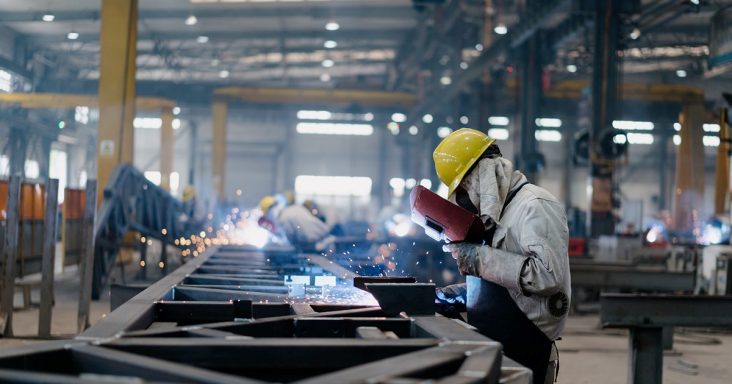Manufacturers see slower growth in October
by November 1, 2022 11:03 am 875 views

Manufacturing sector growth moderated in October, from September, while prices fell and manufacturers faced uncertainty in medium- to long-term demand, according to the Institute for Supply Management (ISM).
The ISM released Tuesday (Nov. 1) the October Manufacturing ISM Report on Business showing the purchasing managers’ index (PMI) decreased by 0.7 percentage points to 50.2%, from September. A reading above 50% indicates the manufacturing sector is growing.
According to the October report, new orders declined, production rose and backlogs fell. Supplier deliveries accelerated, raw materials inventories grew and customers’ inventories were too low. Prices fell, exports decreased and imports rose.
“The U.S. manufacturing sector continues to expand but at the lowest rate since the coronavirus pandemic recovery began,” said Timothy Fiore, chair of the ISM Manufacturing Business Survey Committee. “With panelists reporting softening new order rates over the previous five months, the October index reading reflects companies’ preparing for potential future lower demand.”
The Business Survey Committee panelists’ companies are managing labor levels through hiring freezes and attrition amid uncertainty in medium- and long-term demand, said Fiore, noting that buyers should be encouraged by the decline in prices. The following three manufacturing industries reported moderate-to-strong growth in October: machinery, petroleum and coal products, and transportation equipment.
“Manufacturing expanded for the 29th straight month in October,” Fiore said. “Panelists’ companies continue to carefully manage hiring, month-over-month supplier delivery performance was the best since March 2009, and the prices index indicated decreasing prices for the first time since May 2020. Like in September, mentions of large-scale layoffs were absent from panelists’ comments, indicating companies are confident of near-term demand. As a result, managing medium-term head counts and supply chain inventories remain primary goals. With the decline in the backlog of orders index, buyers and sellers will begin to shore up order books and order streams to reduce share loss in the medium-to-long term.”
The following are comments from respondents:
In the computer and electronic products industry, a respondent noted “continued electronics market challenges” and “flat business activity.” A chemical product industry respondent said “customers are canceling some orders. Inventories of finished goods increasing. Expect some bounce back as some customers may be waiting for commodity prices to decline further.”
Respondents in the plastics and rubber products and the miscellaneous manufacturing industries reported declining prices. “Suppliers are trying to hold off decreases, but competition is increasing,” the manufacturing respondent said.
Other respondents reported slowing orders and customer demand, while supply chain and labor issues have eased. A respondent in the transportation equipment industry said, “order levels are slowing down after pent-up demand in the previous month.” A respondent in the machinery industry said it’s fourth-quarter sales have been affected by its customers’ “general pullback in available capital budgets.”
The decline in the housing market is affecting the electrical equipment, appliances and components industry. An industry respondent said, “capacity has increased over the last two years due to high orders of consumer goods and appliances, so now we’re trying promotions to get our orders up to where we can use all our capacity.”
A respondent in the food, beverage and tobacco products industry said the “growing threat of recession is making many customers slow orders substantially.” Also, Russia’s invasion of Ukraine is contributing to global uncertainty and influencing global commodity markets. And a respondent in the nonmetallic mineral products industry said, “international conditions loom large and seem very foreboding. Overall, we still think 2023 will be a positive year, with at least some moderate growth.”
